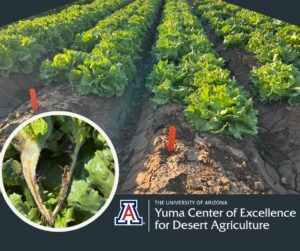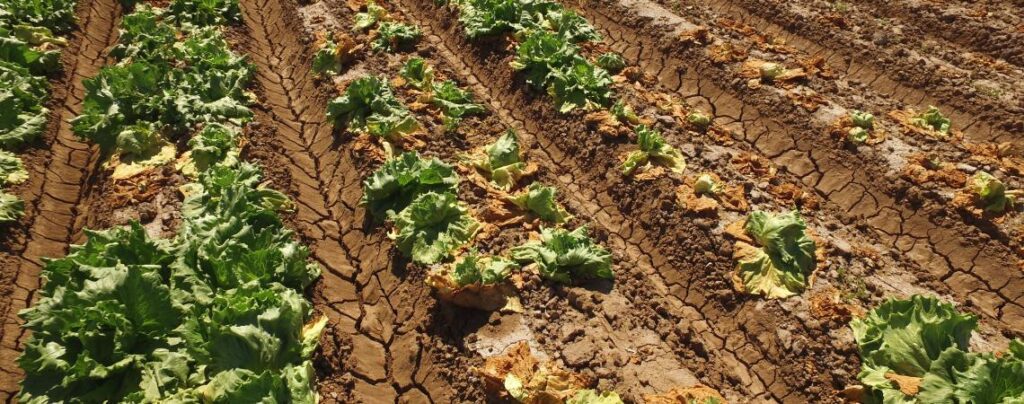Nov 15, 2023Fusarium wilt of lettuce field day scheduled for Yuma
The University of Arizona Yuma Center of Excellence for Desert Agriculture (YCEDA) is scheduling the 2023 Yuma Fusarium Wilt of Lettuce Field Day.
The event, scheduled for Nov. 30, will be at the Yuma, Arizona, field site off Highway 95 and Avenue 5E. It is scheduled to begin at 8:00 a.m.


Stephanie Slinski, YCEDA’s interim executive director and associate director of research, will be onsite to answer questions and share information about the disease.
Slinski possesses degrees in plant and soil science, microbiology and a PhD in plant pathology. She started her plant pathology career in a plant disease diagnostic clinic working with fungal, bacterial, viral, and nematode diseases of vegetable and ornamental crops at the University of Massachusetts. She continued her studies in plant pathology at the University of California, Davis, followed by postdoctoral training at the Forestry and Agriculture Biotechnology Institute at the University of Pretoria in South Africa.
Slinski came to Yuma in 2018 and one focus is building a program to address fusarium wilt of lettuce which includes yearly field trials and a collaboration network to expand active research.
Fusarium wilt of lettuce was first discovered in 1967 in Japan and in 2001 in Arizona. The disease has since spread throughout the lettuce production areas of the southwest U.S.


The disease affects all lettuce types, but is more prevalent in crisphead and leaf types.
Symptoms include severe stunting of lettuce plants with diseased roots showing dark brown streaking and necrosis of the vascular tissue extending from the taproot into the stem. When the disease occurs in seedlings and young lettuce, the plants collapse and die quickly.
In mature plants, disease symptoms may not be immediately evident, but will quickly become visible following warm days when the transpiration load is high. At this stage, the disease can be mistaken for lettuce drop caused by Sclerotinia sclerotiorum. However in contrast to lettuce drop, in a fusarium-infected plant, the lettuce crown will not be completely decayed, there will be no white mycelia growth around the crown and taproot, and there will be no sclerotia visible.
Designed to solve desert agriculture’s challenges, the YCEDA brings scientific research and industry together to address industry needs. Its work focuses priority issues identified by its industry stakeholders, including plant disease, food safety, technology and automation, soil health, and irrigation management, according to a news release.















